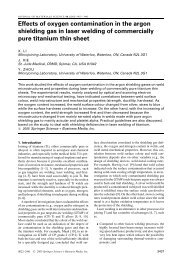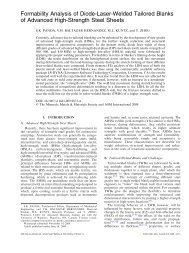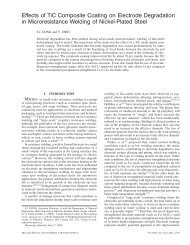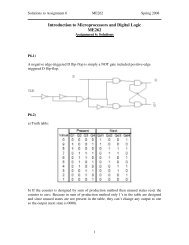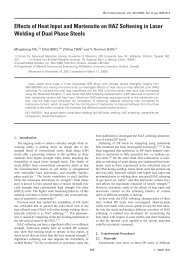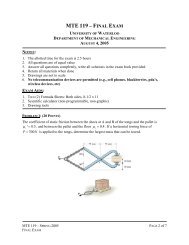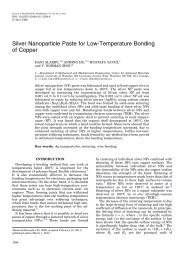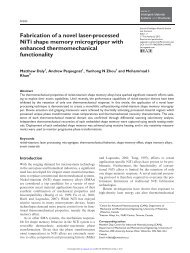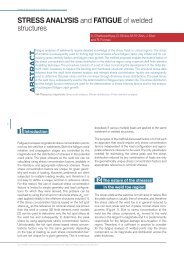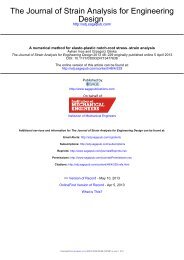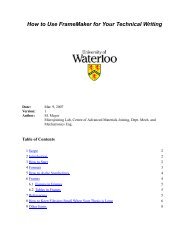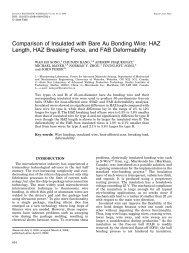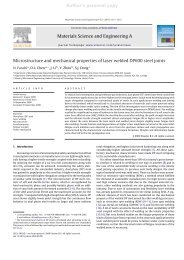Bonding Mechanisms in Resistance Microwelding of 316 Low ...
Bonding Mechanisms in Resistance Microwelding of 316 Low ...
Bonding Mechanisms in Resistance Microwelding of 316 Low ...
- No tags were found...
You also want an ePaper? Increase the reach of your titles
YUMPU automatically turns print PDFs into web optimized ePapers that Google loves.
the current exceeded 200 A. Overweld<strong>in</strong>g occurred when<br />
the peak current surpassed 350 A. Metallographic<br />
observation <strong>of</strong> a weld cross section at the peak JBF<br />
Fig. 4—JBF as a function <strong>of</strong> current for RMW <strong>316</strong>LVM us<strong>in</strong>g<br />
1.5 kg-f weld force.<br />
current range (Figure 2(f)) showed full-fusion weld<strong>in</strong>g.<br />
Hence, the optimized bond<strong>in</strong>g mechanism for maximum<br />
JBF can be described as full penetration fusion weld<strong>in</strong>g,<br />
where the entire cross section <strong>of</strong> wire melts and<br />
resolidifies. The surface tension <strong>of</strong> the liquid and the<br />
presence <strong>of</strong> the electrodes kept the liquid with<strong>in</strong> the jo<strong>in</strong>t<br />
compared to the overweld<strong>in</strong>g condition, where the<br />
fusion zone became too large and was subject to dropthrough<br />
and th<strong>in</strong>n<strong>in</strong>g defects, which reduced the<br />
mechanical properties. Large variations <strong>in</strong> the JBF were<br />
observed for the optimal conditions, which has also been<br />
shown <strong>in</strong> past literature. [1,7,8] This scatter may be<br />
attributed to the nature <strong>of</strong> the tensile test setup, which<br />
<strong>in</strong>evitably resulted <strong>in</strong> comb<strong>in</strong>ed load<strong>in</strong>g conditions.<br />
C. Fracture Surfaces<br />
Fracture surfaces <strong>of</strong> tensile samples are shown <strong>in</strong><br />
Figures 5 through 7. Interfacial failure modes were<br />
observed for the 100 A weld<strong>in</strong>g condition (Figure 5). A<br />
small bonded region, about 150 lm <strong>in</strong> diameter, was<br />
evident at the center <strong>of</strong> the fracture surface. Dimples <strong>in</strong><br />
this region are similar to those observed by Wang<br />
Fig. 5—Fracture surfaces for weld made us<strong>in</strong>g 100 A and 1.5 kg-f weld force.<br />
Fig. 6—Fracture surfaces for weld made us<strong>in</strong>g 120 A and 1.5 kg-f weld force.<br />
METALLURGICAL AND MATERIALS TRANSACTIONS A VOLUME 40A, APRIL 2009—913



